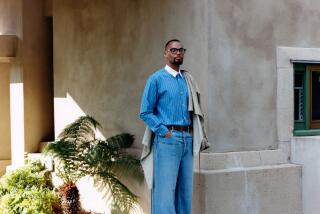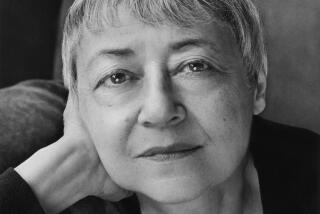Book review: ‘Against Wind and Tide’ offers revealing portrait

Against Wind and Tide
Letters and Journals, 1947-1986
Anne Morrow Lindbergh, edited and with an introduction by Reeve Lindbergh
Pantheon: 358 pp., $27.95
“A woman writer is ‘rowing against wind and tide,’” Anne Morrow Lindbergh told her daughter Reeve in 1972, quoting Harriet Beecher Stowe. “We cannot — or only with the greatest difficulty — produce a great ‘body of work.’… And it isn’t just being a woman. It is some other deeper conflict between art and life.” Ultimately, Lindbergh made art from her life; this posthumous collection joins five earlier volumes of diaries and correspondence that explore her experiences with the subtlety and drama of a good novel.
As Reeve Lindbergh notes in the introduction, her mother “struggled with issues men and women have to face in every era.” The central issue for Anne was a lifelong battle to reconcile two equally powerful impulses, for connection and autonomy. Her warm, intimate letters show her wholly engaged with her family and friends, yet she also felt a consuming need to conserve a private space within that was not accessible even to those she most loved. “It is only in solitude that I ever find my own core,” she wrote to her husband, Charles, in 1951. “Only through one’s own core can one be really related to others. … [W]e must always allow each other to be free to go back to the tap-root place or work that connects us to ourselves again.”
Charles certainly felt free throughout their marriage to be away for long periods of time, leaving Anne to cope with five children (ranging in age from 15 to 2 as this volume begins in 1947). He was hardly a stereotypical male chauvinist — indeed, he pushed her to write more and get bogged down less in domestic minutiae — but his absences contributed to her inability to focus. In a blisteringly frank diary entry from 1953, shortly after the publication of Charles’Pulitzer Prize-winningmemoir of his historic transatlantic flight, “The Spirit of St. Louis,” Anne set down her complicated emotions about his achievement and their relationship.
“Twenty years of living with me have gone into that book,” she wrote. It wasn’t just that she had helped edit and shape “The Spirit of St. Louis”; its entire text was imbued, she felt, with habits of introspection and analysis he had learned from her. “Four books of my own have been swallowed up in it,” she commented bitterly. “He has written HIS book & I have never written mine.... The struggles to keep life — marriage — children afloat have not left enough extra for me to write with.”
She had facilitated his writing during an anguished time when she was so miserable that she started seeing a psychiatrist, a step that Charles angrily opposed. The contrast between her support and his hostility made Anne understandably bitter. What made her unusual was her ability to stand back and see that she was complicit in her own failures, and that it was not Charles’ fault she lacked the confidence (and egotism) to put her work first.
In fact, Anne did finally produce “her” book just two years later: “Gift From the Sea,” a quietly feminist text published eight years before Betty Friedan’s “The Feminine Mystique.” Its long run on the bestseller lists shows “how many unhappy women there are in America,” she commented wryly; she herself seemed to be feeling better, judging by letters and diary entries from this period.
You would have to read A. Scott Berg’s biography of Charles, however, to learn that Anne was having an affair with a man who had been her doctor and would remain a close friend after the romance ended. Although Reeve Lindbergh refers to their “loving friendship” in her introduction, it is perhaps natural that she says nothing explicit about the relationship. There are several other instances in which Anne’s allusions to unspecified difficulties would have made more sense to the reader if they had been clarified in footnotes; since these usually occur in letters to her children, it’s likely the editor is guarding her family’s privacy.
These minor omissions do not detract from the wonderfully rich sense of Anne’s personality and preoccupations conveyed in “Against Wind and Tide.” While the five previous volumes, edited by Anne in the 1970s, delved deeply into periods of a few years, this one covers four decades of growth and change. We see her coming to understand that Charles’ absences were necessary for him while matter-of-factly voicing her feelings of being “abandoned and put upon.” She learned to make her own plans and firmly refused to adjust them to his last-minute demands. She continued to be grateful for the worlds he had opened up for her while realizing she had worlds of her own to explore.
Nurturing her children through crises accompanying their entry into adulthood, she displayed an extraordinary ability to lovingly accept their choices and defend them against Charles’ often severe criticism without indulging in recriminations or encouraging them to see their father as the enemy. Her letters amply justify Reeve’s moving tribute in the introduction: “She addressed our joys and sorrows with the gifts of her openness and wisdom, her willingness always to listen, never to judge.”
Her generosity to others came from that inner core she found so difficult to preserve during the crowded, hectic decades of child-rearing and marital stress. But somehow she managed to achieve the precarious “balance between solitude and sharing” crucial to her fulfillment. The sorrowful yet serene pages chronicling the years following Charles’ death in 1974 reveal a woman saddened by loss but content with what remains.
“At least this writing in my diary lets me tap down to a deeper, quieter level,” she wrote in 1985. “It is worthwhile, even if not a book.”
Now that it is a book, bringing to a poignant close a six-volume odyssey sensitively tracing the arc of one woman’s life, we can see that with her diaries and letters Anne Morrow Lindbergh did in fact create the great “body of work” she feared she would never produce.
Smith is a contributing editor for the American Scholar and reviews books for The Times, the Chicago Tribune and the Washington Post.
More to Read
The biggest entertainment stories
Get our big stories about Hollywood, film, television, music, arts, culture and more right in your inbox as soon as they publish.
You may occasionally receive promotional content from the Los Angeles Times.










